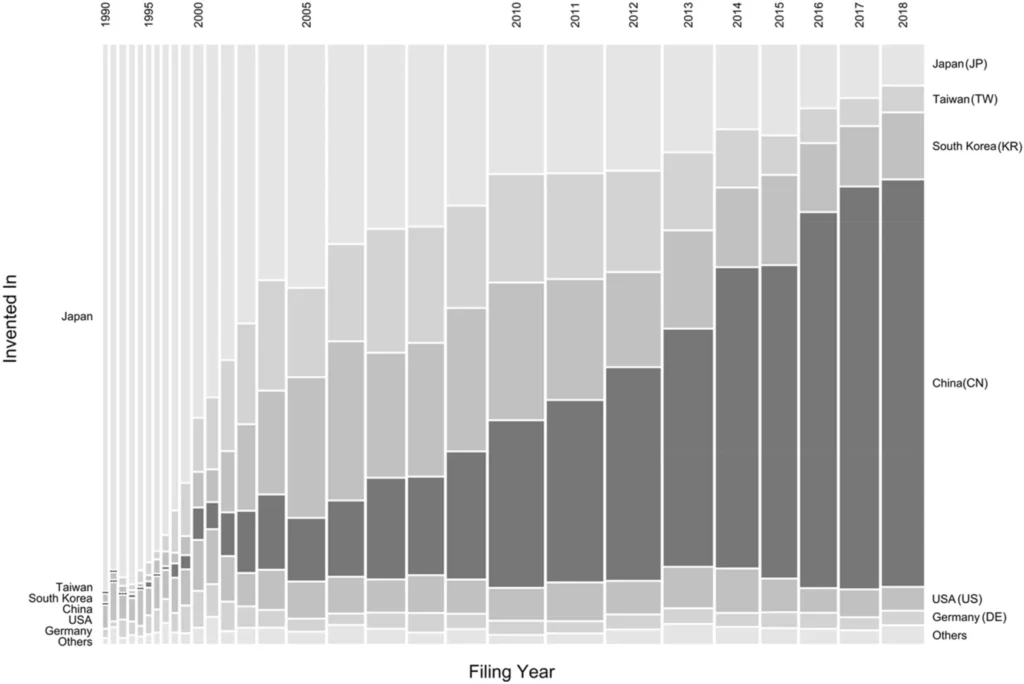Supporting IP Modularity as a Growth Strategy With Insights From Patent Analytics

In today’s highly competitive business landscape, intellectual property (IP) is becoming an increasingly important asset for companies of all sizes. IP provides a competitive advantage by protecting your innovations and creations from being copied or stolen by competitors. However, creating an effective IP strategy is not a simple task. It requires careful consideration of a variety of factors, such as the company’s long-term goals, market conditions and future risks. One strategy that we have observed is companies generating growth by modularizing their IP or patents. That means they create chunks of IP as modules, based on various aspects and only keep the valuable IP modules proprietary, while releasing the less valuable IP to the public.
The release of less valuable IP may encourage other companies, including competitors, to pick up on the new technologies and develop them further, ultimately growing the business potential of the original invention. This process can create a cycle of benefits where the release of IP leads to the development of new technologies, which in turn creates new opportunities for the original inventing firm.
Possible risks involved in IP modularization
Even though modularization might sound like a great idea, it is important to consider the long-term effects of IP management. In a recent publication from Professor Dr. Peter M. Bican from the Friedrich-Alexander-University of Erlangen-Nuremberg and our research team members Dr. Dirk Caspary and Dr. Carsten C. Guderian, Cross-Border Dynamics of IP Modularity: International Patenting in LEDs and Lithium-Ion Secondary Battery Technology, they focus their analysis on the effects of IP management over the course of at least 50% of the patent lifetime and monetarization. They argue that high-quality data can be used to assess not only currently relevant IP but also future relevant IP, which may support the above-mentioned IP modularity strategy. It is important to consider what will likely be valuable in the future and ensure this IP is not released but kept in-house.
The analyses have shown that some original inventing companies, such as those in Japan, have lost their grip on their technologies in fields such as LEDs and Lithium-Ion Secondary Battery Technology. This highlights the importance of time considerations in IP management, as the period considered for monetarization may span more than 50% of patents’ lifetimes. Companies must consider the long-term effects of their IP management decisions and how they will shape the development of their technologies over time.
Caption: Mosaic plot illustrates the large decrease in the share of LED inventive activity originating in Japan from 1990 to 2018.
Source: Bican, P.M., Caspary, D., Guderian, C.C. (2022). Cross-Border Dynamics of IP Modularity: International Patenting in LEDs and Lithium-Ion Secondary Battery Technology. Management International Review. https://doi.org/10.1007/s11575-022-00495-w
IP management is a complex and important undertaking for businesses looking to profit from their inventions. By modularizing IP, releasing less valuable IP and considering the long-term effects of IP management, corporations can shape their innovation and IP strategy to ensure they profit from their inventions over time. High-quality patent data can help firms make informed decisions about their IP management and shape their strategy for the future. These intertemporal considerations are crucial for firms looking to maximize the value of their IP and ensure long-term success.
Read the full article here, then learn more about using patent data for strategic IP decisions.

Get actionable insights for strategic decision making
Want to become more effective at managing your patent portfolio, identify worldwide relevant patents and technology trends, assess the competitive landscape, and find partners and licensing opportunities?

